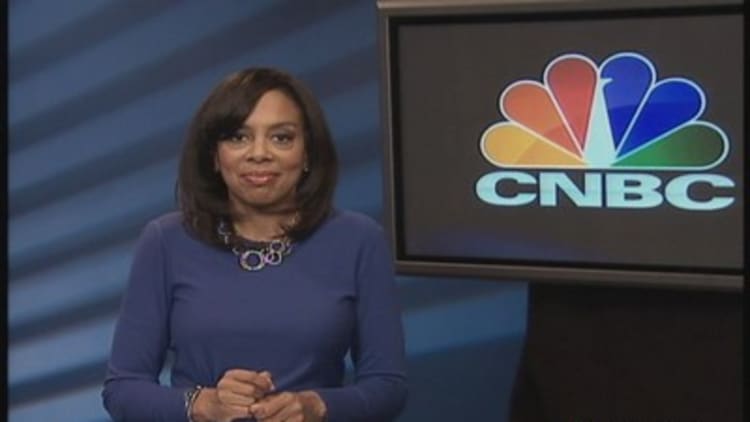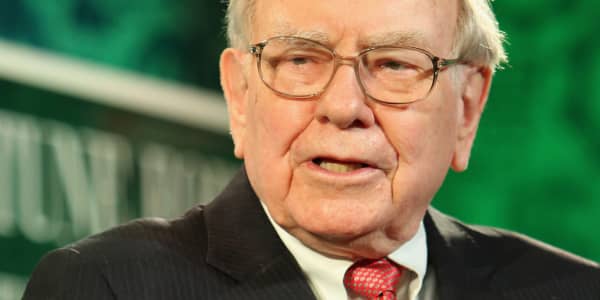
There's an easy way to nearly double the equity return that your 401(k) is generating—you just can't have it.
The investment asset class delivering the highest rate of return for future retirees is private equity. At a time when American workers are fretting over not having enough saved up in their retirement nest eggs—and facing the prospect of working longer—the pressure is on to maximize long-term savings options.
Large public pensions with billions of dollars to invest are seeing a big payoff from private equity. It's outperforming every other asset class, according to a new study by the Private Equity Growth Capital Council (PEGCC).
But unless you are a pension fund chief investment officer—or are a public sector worker that the pension CIO is investing on behalf of—your retirement plan isn't likely to access private equity.
"Time and again private equity has proven that it's the single-best asset class for public pensions, by delivering superior returns over longtime horizons," said Steve Judge, president and CEO of the PEGCC.
The study looked at 146 public pension funds in the U.S. with assets of more than $1 billion and found that private equity delivered an annualized return of 10 percent over the past decade. Compare that with the 5.8 percent return that private workers see in their stock-heavy portfolios.
(Read more: Target date fund 'autopilot' ain't what it used to be)
It's no surprise that state pension funds are upping stakes in the PE game. Public pensions bumped up their investments in private equity from 9.6 percent to 10.3 percent in 2012—making it the third-most invested asset class behind public equity and fixed income.
CalPERS—the biggest public pension system in the country—has the largest PE exposure, at $34.2 billion.
Top 10 pension funds by private equity returns
| Rank | Public Pension | Annualized Private<br> Equity Return<br> 5-Year | Annualized Private<br> Equity Return<br> 10-Year |
|---|---|---|---|
| 1 | Massachusetts Pension Reserve Investment Trust (Prit) Fund | 9.1% | 15.4% |
| 2 | Los Angeles County Employees Retirement Association | 10.2% | N/A |
| 3 | Teacher Retirement System of Texas | 6.3% | 15.5% |
| 4 | Houston Firefighters' Relief and Retirement Fund | 9.3% | 13.6% |
| 5 | Minnesota State Board of Investment (Combined Funds) | 7.7% | 14.4% |
| 6 | Iowa Public Employees' Retirement Fund | 7.9% | 14.1% |
| 7 | San Francisco Employees' Retirement System | 7.4% | 13.1% |
| 8 | Utah Retirement System | 6.2% | 13.5% |
| 9 | Pennsylvania Public School Employees' Retirement System | 6.6% | 13.0% |
| 10 | Contra Costa County Employees' Retirement Association | 7.1% | 12.7% |
Source: Source: Private Equity Growth Capital Council
The biggest private equity winner has been the Massachusetts Pension Reserves Investment Trust—with a 15.4 percent 10-year return.
Time and again private equity has proven that it's the single-best asset class for public pensions.Steve JudgePrivate Equity Growth Capital Council CEO
Public pension turmoil has been looming over cities and states for years. The pressure is mounting for states to close gaps and keep enough cash on hand to make sure obligations do not fall into the red—rendering them unable to make good on the benefits they owe to the some 17 million-plus state public employees across America.
(Read more: Jack Bogle on teaching your kids to invest)
New Jersey and Illinois are among the worst in the nation when it comes to dollars owed to future public workers. The Garden State's shortfall widened in fiscal year 2012, ballooning to $47.2 billion. Illinois might be in the worst shape—it has a shortfall of nearly $100 billion. In fact, collectively states have an outstanding bill of $1.38 trillion in unfunded pension obligations, according to the latest numbers from the Pew Center on the States.
"Private equity continues to strengthen the retirement security of the millions of American police officers, firefighters, teachers and administrators who rely on hard-earned pension benefits," Judge said. "There is no doubt that private equity returns are essential to improving the pension funding equation."

(Read more: Six feet under as a retirement plan?)
While Judge touts the private equity performance, it's debatable whether 401(k) savers really should feel left out of the game. It might not be a game you want to play. And alternative equity investments are starting to make their way down to the level of the retail investor.
"My general preference would be to avoid asset classes with a higher probability for volatility in a vehicle that should be making capital preservation its highest priority," said Tim Maurer, vice president at The Financial Consulate.
Individual savers do face a crisis akin to the underfunded status of the largest public pension plans. Study after study has shown that financial fragility has hit those who are in the critical retirement saving stage. The latest study from Wells Fargo found that 69 percent of middle-class Americans—making between $25,000 and $100,000—have no savings plan.
An avalanche of bills, credit card debt and exceptionally large mortgages are hindering individuals from investing in their retirement portfolios, according to George Washington University economics professor Annamaria Lusardi.
"To the degree that any alternative investment in a pension plan lowers the overall portfolio's standard deviation, I'm interested," Maurer said, but he added, "I have very little interest in re-prioritizing growth over capital preservation for pension plans as well as portfolios for individuals in or near retirement."
—By Anthony Volastro, CNBC Segment Producer.




